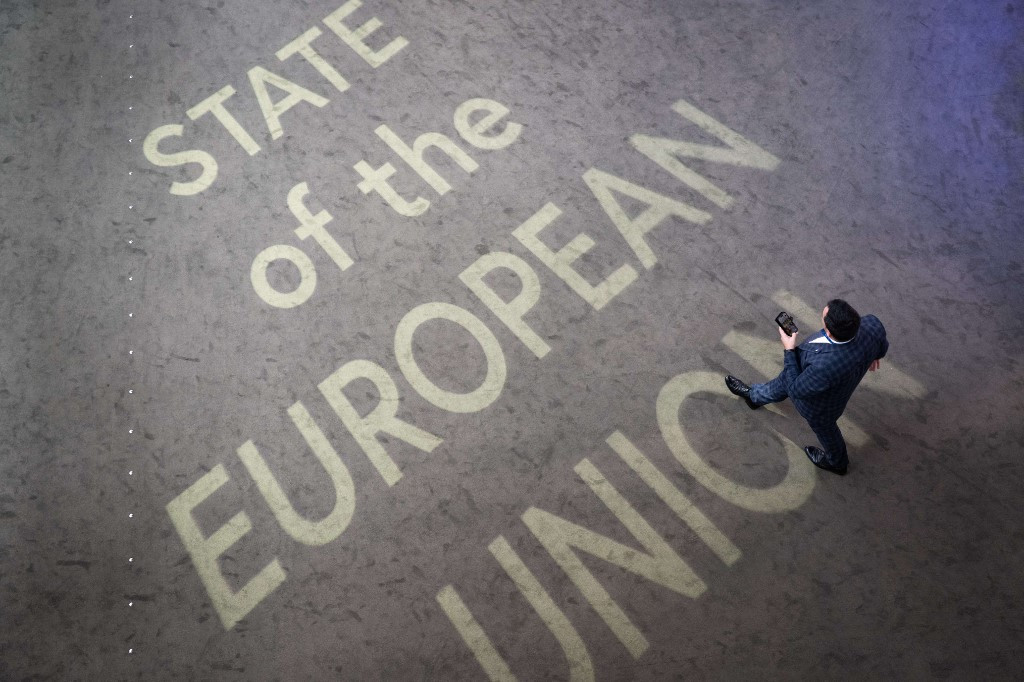Popular Reads
Top Results
Can't find what you're looking for?
View all search resultsPopular Reads
Top Results
Can't find what you're looking for?
View all search resultsEurope's aging burden far less than US or China
On average the European Union's 27 members' aging-related costs will rise by just over 1 percent of gross domestic product over the next 45 years
Change text size
Gift Premium Articles
to Anyone
G
raying Europe has long been considered an outlier in global demographics – but the rising cost to its governments in terms of bills for pensions and health care are more manageable than assumed and less than in rival economies in the United States and China.
In a detailed report on the rising cost to the public purse from Europe's aging population, Brussels-based think Breugel this week outlined the trajectory through 2070 using the latest country-by-country data from the European Commission.
Familiar problems and necessary remedies recur – pressure on budgets caused by longer life spans, the need to raise retirement ages gradually and for better-funded pension and care systems and more targeted employment-based inward migration. Indeed one eye-catching line from the report is that it now looks likely that the baby boomer generation will have experienced longer retirement than either their parents or their children.
But perhaps the most remarkable takeaway was how relatively contained Europe's fiscal burden appears in aggregate.
That's not to put a gloss on a worrisome problem – one raising the prospect of falling workforces, weighing on the continent's potential growth and with little hope of a reversal of alarming birth rate declines.
But the context of where Europe fits into the global picture – at least in terms of its fiscal exposure – is certainly very different from prevailing gloomy narratives.
Breugel's report calculates that on average the European Union's 27 members' aging-related costs will rise by just over 1 percent of gross domestic product over the next 45 years – with categories including pensions, long-term care, health care and education.
Curiously but intuitively, the projected baby bust means falling education costs register as a saving for the whole bloc.
The circa 1 percentage point of GDP rise in costs the report outlines – about 210 billion euros (US$245 billion) relative to this year's GDP – was then compared to equivalent estimates for the US and China.
Bruegel used the latest long-term US estimates from the Congressional Budget Office to show Federal government and healthcare expenditures rising about 4-5 percentage points of GDP through 2055. And it used the International Monetary Fund's annual economic surveillance estimates for China to show government pension spending alone rise by about 9 points of GDP through 2052.
"It is not...the cost of European welfare states that is 'out of control' as the whole world ages," authors David Pinkus and Jacob Funk Kirkegaard noted. "The real risks lie elsewhere."
One caveat, much like EU-wide estimates of debt-GDP, is that the average for the bloc masks big variations from country to country.
While smaller economies from Hungary to Luxembourg may see a 5-10 percentage point rise in costs by 2070, there are surprising 2-point drops in the projected costs incurred by Italy and France. Germany, the EU's biggest economy, sits somewhere in the middle of that with a 2-point rise.
There are numerous investment takeaways from such a long-term view, the dour view of potential growth puts enormous pressure on innovation and productivity advances that Europe has been lagging on. And how this year's German and EU-wide defense spending plans and stimulus spending are made to work will be a big factor in how that happens.
But in fragile public bond markets wary of long-term debt sustainability and credit ratings firms scoring the risks, the relatively modest European bill should be food for thought.
---
The writer is columnist for Reuters. Views expressed are personal.











